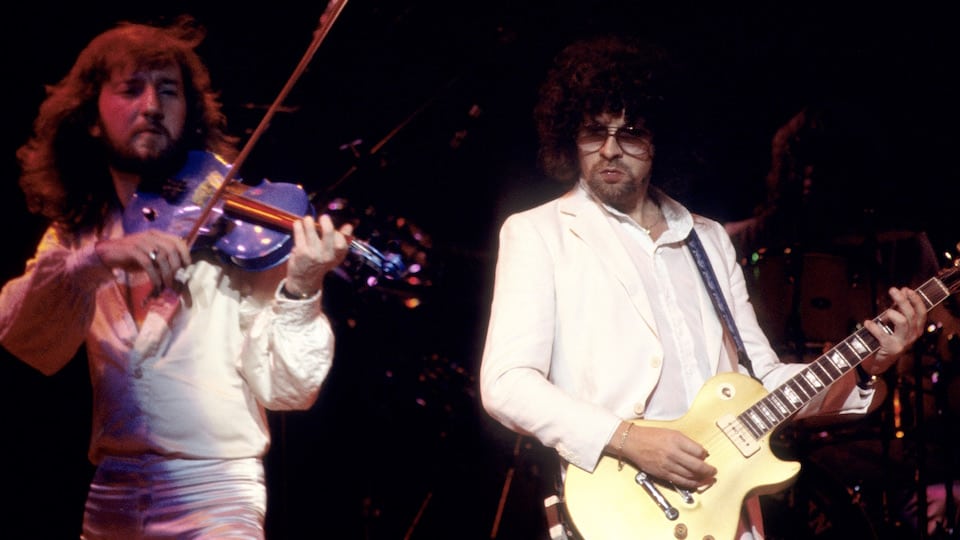Cleveland is home to the Rock ‘n’ Roll Hall of Fame, but will there ever be a home for a “Classical Rock Music” Hall of Fame? That would honor rockers who dropped instruments in their songs (like violin, cello, harp, flute, and oboe) most associated with classical music. By deftly incorporating these instruments, songs were created that became a huge chunk of the Classic Rock canon.
One of the earlier stabs at adding more violins and fewer guitars was Buddy Holly’s 1958 single “It Doesn’t Matter Anymore.”
Paul McCartney similarly stuck some classical touches on songs including “Yesterday,” “Eleanor Rigby” and “She’s Leaving Home.” That genre-bending blend may have caused the record-buying public to have an open mind for rock groups who added Mozart-like flourishes.
Classical case in point, the Moody Blues. Orchestral interludes, including those supplied by Ray Thomas’ flute, filled the grooves of Days of Future Passed (which included “Nights in White Satin”). This formula served them well and influenced Electric Light Orchestra (check out their rollicking classical/rock music take on “Roll over Beethoven”).
John Cale of the Velvet Underground plugged in his electric viola to create an aurally hypnotic sound that made the Velvets’ debut album a timeless masterpiece. Jimmy Page slid a violin bow across guitar strings on Led Zeppelin’s “Dazed and Confused” and “How Many More Times.” And let’s not forget Roxy Music oboist Andy Mackay’s classical turns in songs like “If There is Something” and “Ladytron.”
Indeed, violins, cellos, and even a French horn (played by the Who’s John Entwistle in “Pictures of Lilly”) have been used in innumerable rock songs. But Ian Anderson took an instrument mostly seen in the middle of a marching band and made it the centerpiece of Jethro Tull.
What seemed like an incongruous gimmick wound up being Tull’s instantly recognizable and captivating sound. Thanks to Anderson’s ingenious juxtaposition, now hearing a flute solo in a rock song only makes a listener think, “This band’s ripping off Tull.”
While, at the time, the use of classical instruments in rock music may have seemed incongruous, it’s not a complete surprise. Many artists of that era had some basic classical music exposure, if only via childhood piano lessons. Juxtaposing the sounds associated with an orchestra pit with those of the mosh pit created some truly genius tracks.
-Mark Daponte
Photo: ELO (Getty Images)





Interesting article, but to talk about rock artists incorporating violins and not even mention Kansas? Ummm….
Nice article and, of course, just the starting point. I will be thinking of this all day. By this time, so many artists drop these instruments into song. The Stones did with As Tears Go By, the Beatles did on lots of songs with lots of different instruments. My favorite, Jackson Browne, had some violins on his songs, notably Before the Deluge, courtesy of David Lindley. But that is why, like them or not (and I did to some extent), the Moody Blues should have gone into the Hall much sooner, because they did what I think should be a criterion, they added a different dimension to rock.
Mark, I am writing a book of folks’ stories, memories, about their concert/music experiences. If you have a story you would like to contribute, or just want to know more about the project, please contact me at eric.concertstories@gmail.com Thanks.
The New York Rock and Roll Ensemble went even further. Michael Karen, Marty Fulterman (now Mark Snow of the X-Files theme), and Dorian Rudnytsky of Juilliard added two rock musicians (Brian Corrigan and Clif Nivison) to form a band that blended classical with rock music. Their “Brandenburg” begins as a classical piece with oboes, guitar and cello, evolves into a quasi-folk song with lyrics and ends as a full body electric rock number. Their first two albums embodies this style, then they became a more traditional rock band. The late Michael Kamen became an accomplished session musician, orchestral arranger, and American composer of movie scores including everything from “Brazil” to the “Lethal Weapon” series to “Wall-E”, not to mention “Band of Brothers”. I had the pleasure of seeing them before live in the early seventies at Marist College.
I think you did a terrific job highlighting just a few examples of classical music (and instruments) used in rock. Very pleased you included John Entwistle’s early inclusion of the french horn, too!